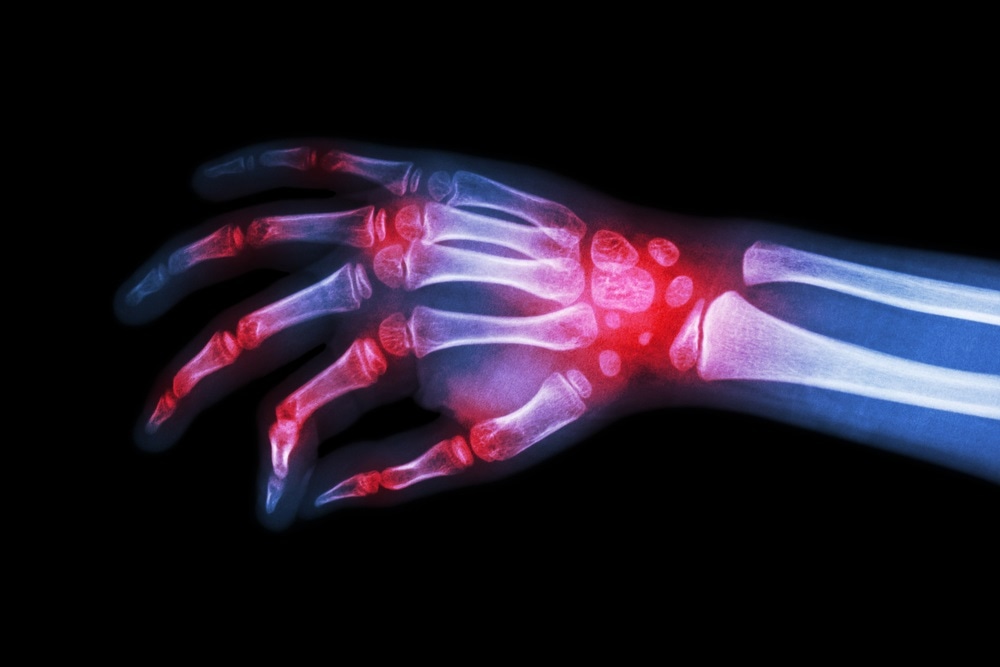
The study is based on data from the Mayo Clinic Biobank, which carries a vast array of blood and blood derivative samples, as well as health information on 74 types of illness with the age of onset for each. The data is all from volunteers, including Mayo Clinic patients. The information is all self-reported.
Earlier studies have shown that patients with RA fare worse when they also have other coexisting diseases, in terms of physical disability, functional ability, quality of life, and death rate. The current study builds on earlier findings with a larger database and a greater depth of information.
Rheumatoid arthritis
RA is a chronic inflammatory condition, found in about 1.3 million American adults. The risk in women is double or triple of that in men. It has both systemic and joint manifestations: it causes not only arthritis but also inflammation of the lungs, the heart, and the blood vessels.The damage caused in all these structures is due to the inflammatory reaction rather than ordinary wear and tear. RA is an autoimmune disease caused by an immune attack by the body on its own tissues.
The inflammation in the joint primarily affects the synovium, the smooth lining of the joint cavity and bone ends, that produces lubricating fluid. As a result, the synovium swells and becomes painful, leading to joint stiffness. The small hand and foot joints are most frequently involved, with a symmetrical pattern. The eventual outcome with severe or inadequately controlled RA may be the erosion of the joints and deformity.
Systemic findings include fatigue, weight loss, anemia, and inflammation of the lungs and blood vessels. Most patients are diagnosed after early adulthood, in their forties or fifties. The lung may become fibrosed, causing chest pain and shortness of breath. Pericarditis, or inflammation of the heart’s covering, is another cause of chest pain. Dryness of the eyes occurs in Sjogren’s syndrome and scleritis, both frequent accompaniments of RA.
Vasculitis is an autoimmune condition that is also commonly found to occur in RA. It occurs due to inflammation of the walls of the blood vessels, causing them to weaken and bulge, forming an aneurysm or become scarred and narrowed.
In some patients, it causes painful inflammation of the eyeball, or scleritis, threatening vision. In others, inflammation within the arteries can precipitate blood clots, or ischemia (cutting the blood supply) to vital organs, which may endanger life. Heart attacks and strokes are also more common in RA patients.
The disease runs a chronic course, with flare-ups and remissions (symptom-free periods) but is not curable.
The study and its findings
The study was carried out with over 3200 patients, including 821 newly diagnosed RA patients (from January 2009 to February 2018), and about 2500 controls. The researchers looked for associations between disease conditions with RA.They found that certain autoimmune disorders and seizure conditions seem to increase the risk of developing RA.
We found that comorbidities accumulate in an accelerated fashion after diagnosis of rheumatoid arthritis. Heart disease and other conditions may develop as a result of rheumatoid arthritis.”
Vanessa Kronzer, corresponding author
Altogether, they found 11 disease conditions that were linked to RA. Blood clots were more common in patients who would later be diagnosed with RA. This indicates that the body is already in a state of inflammation within the body, even before RA becomes obvious clinically. A similar trend was seen with type 1 diabetes, which was present to an increased extent in patients who would later develop RA.
The researchers point out that it is important to look for RA in patients who are diagnosed with autoimmune conditions, in light of these and similar findings. Conversely, people who already have an RA diagnosis must be screened for heart disease, other vascular conditions, blood clots, and sleep apnea, according to Kronzer.
Eurekalert.org. (2019). Study finds associations between rheumatoid arthritis, other diseases before and after diagnosis. https://www.eurekalert.org/emb_releases/2019-11/mc-sfa111419.php






No comments
Post a Comment